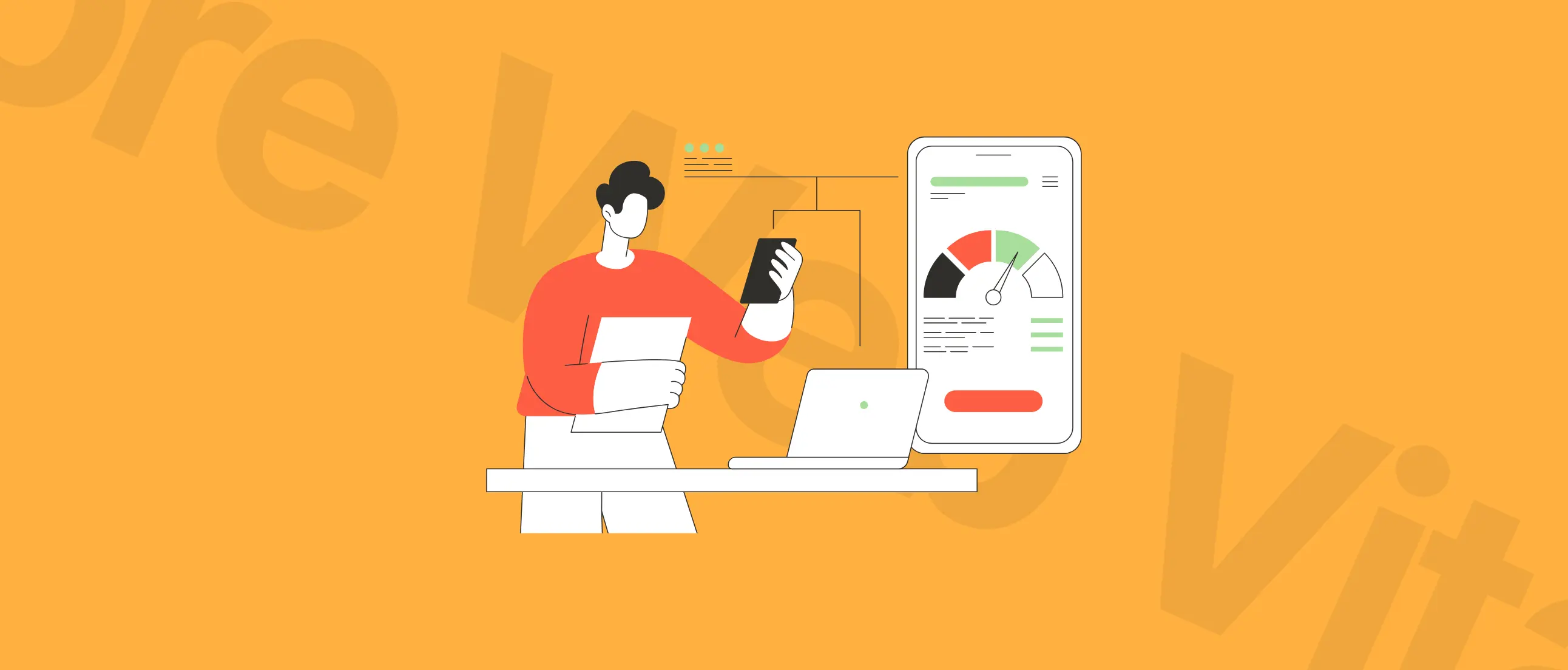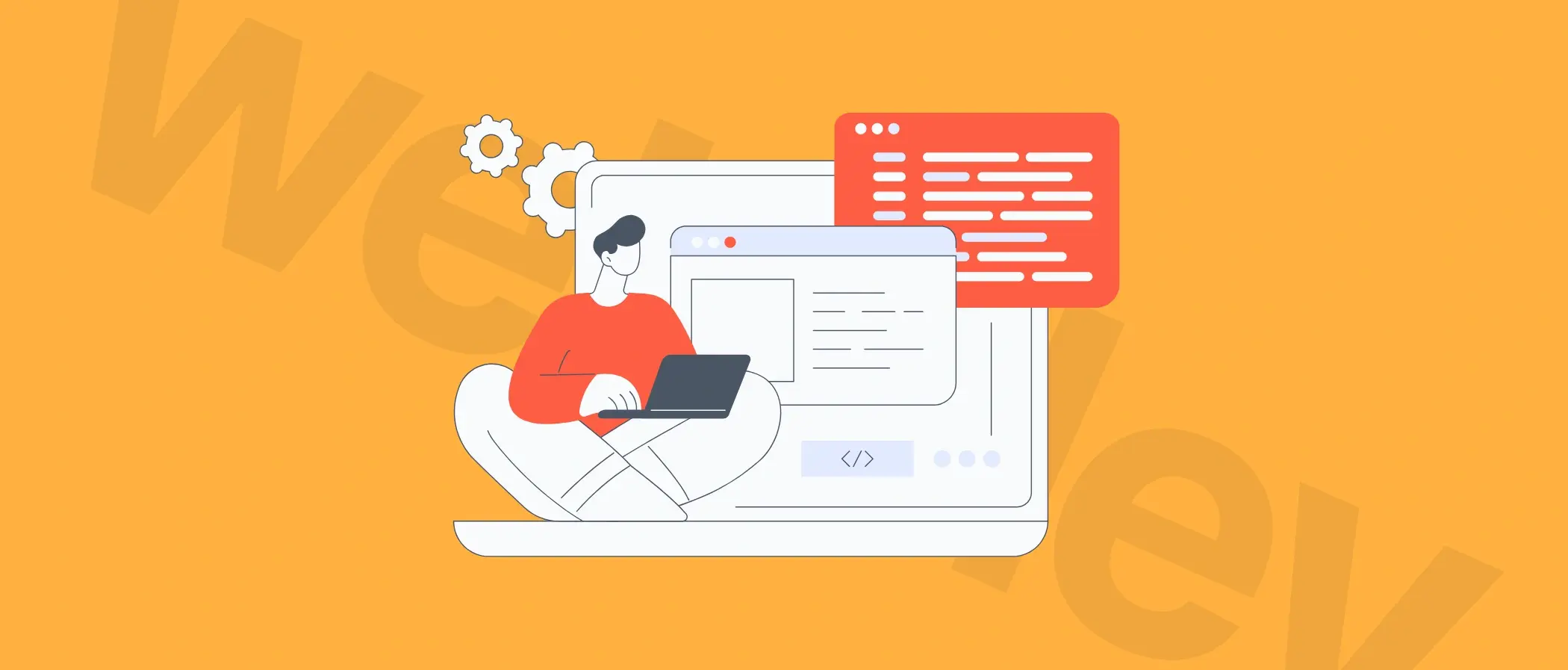How Much Will Improving Core Web Vitals Actually Increase My Traffic or Sales?
Are you one of those business owners asking yourself, ‘Why isn’t my site ranking or converting as well as my competitors’? Even after investing in SEO and marketing, something can still feel missing. The problem often goes beyond keywords or ad spend and comes down to how fast and seamless the website feels to users. This is where Core Web Vitals optimization becomes essential.

TL;DR
Core Web Vitals are official Google ranking factors and directly affect SEO, user experience, and conversions.
Even a 1-second delay can cut conversions by ~4.4% and cost businesses thousands in lost annual revenue.
67% of businesses report revenue loss due to poor performance; 53% of mobile users abandon sites loading longer than 3 seconds.
Mobile shoppers are especially sensitive to delays, making optimization critical across all devices.
Upgrading to modern frameworks like Next.js, Shopify Hydrogen, or headless commerce ensures future-proof performance and scalability.
Google now treats Core Web Vitals as a ranking factor, but their impact goes far beyond SEO. They directly influence site speed, user experience, and ultimately your conversions and sales. Studies show that even a one-second delay in page load can lead to a significant drop in conversions, especially for e-commerce.
If you’re serious about staying ahead, you need to understand not just what Core Web Vitals are, but also why they matter for your business growth. While CWVs are crucial, they’re not the only factors driving rankings and conversions. For a deeper understanding, read our detailed guide: Modern Website Optimization for Business Growth.
What Are Core Web Vitals?
They’re Google’s way of measuring the quality of a website’s speed, interactivity, and visual stability. These metrics reflect how real users experience your site.
Here are the three main ones to know:
Largest Contentful Paint (LCP). Measures how fast the main content of a page loads. If your hero image or key product photo takes too long to appear, users may leave before they even start browsing.
Interaction to Next Paint (INP). Measures how long it takes from when a user interacts (click, tap, or keypress) until the browser presents the next frame reflecting that interaction (i.e. the visual feedback).
Cumulative Layout Shift (CLS). Measures visual stability. You’ve probably experienced a page where the button you were about to click suddenly moves because something else loaded on top of it – that’s what CLS tracks.
Google introduced these metrics because they directly affect user experience, SEO rankings, and conversions. A fast, stable, and responsive website is more enjoyable to use, keeps people engaged, and makes it easier for them to complete purchases.
Why Does Google Care About UX Metrics?
Google’s mission has always been to provide users with the most relevant and useful results. In this case, “useful” means a site that is fast, easy to navigate, and free from unnecessary frustration. This is where Core Web Vitals and SEO rankings come together.
Imagine two websites with equally strong content. One loads quickly, stays stable, and responds immediately to clicks. The other is slow, shifts around as ads appear, and leaves you waiting when you try to interact.
Most people will stay on the first site and abandon the second. Google recognizes this behavior, which is why Core Web Vitals SEO impact became a ranking factor. Strong user experience metrics directly influence search visibility.

Marcin Sulikowski
co-CEO, Naturaily
Google encourages businesses to build sites people genuinely enjoy, aiming to make every visit from search results smooth and satisfying.

Core Web Vitals are key to growth
Google rewards fast, stable, and responsive websites. Make sure yours drives visibility and revenue.
The impact is even greater in e-commerce. A product page that takes too long to load or a “Buy now” button that moves just as the customer tries to click it can instantly cost you a sale. Paying attention to Core Web Vitals optimization improves visibility in search results and your ability to convert visitors into customers.
Now, let’s dive deeper.
Why Exactly Core Web Vitals Matter for Business?
For business owners, the most important question is simple: do Core Web Vitals actually affect sales and traffic? The short answer is yes. Google has made it clear that these metrics are part of ranking factors, which means a site that performs well has a higher chance of showing up above competitors. That alone can lead to more visitors.
The real impact, however, goes beyond SEO rankings. Studies have shown that:
0%
of businesses report lost revenue due to poor website performance,
with the average business losing $20,172 annually
Source
Liquid WebFor every additional second of load time between 0-5 seconds, conversion rates drop by an average of 4.42%. This translates to significant annual losses: if an e-commerce site generates $500 daily in sales, the 7% conversion loss from a one-second delay represents nearly $13,000 in lost annual revenue.
Core Web Vitals Case Studies
How n8n Boosted CWVs and Traffic (SaaS industry)
When n8n realized their static website was holding back SEO growth and user experience, they turned to us for help. The old setup struggled with slow performance, manual SEO management, and an inability to scale content effectively.
We rebuilt the infrastructure with a Nuxt-based hybrid rendering approach, optimized caching, and automated technical SEO. The result was a site that loaded faster, responded smoothly, and delivered stable page layouts across devices. In other words, their Core Web Vitals optimization was brought to the highest standard.
The numbers speak for themselves:
100 Core Web Vitals score across all key metrics
300% increase in monthly organic traffic in just two years
900% more Top 10 keywords within a single year
Capacity to dynamically generate 300,000+ pages for SEO-driven growth
How Nanobebe Improved CWVs with Next.js Headless Shopify
Nanobebe needed a faster and more flexible platform to support their rapid growth. Their old Shopify Liquid store was slowing down performance and limiting customer experience. We guided them through a transition to a headless commerce architecture with Next.js and Storyblok CMS, focusing on speed, scalability, and user experience.
The new site achieved an 80%+ reduction in Total Blocking Time, a 117% increase in GTmetrix Performance Score, and cut over 10 seconds from Fully Loaded Time.
These improvements to Core Web Vitals created a smoother shopping journey, so Nanobebe could confidently launch new products and scale their e-commerce business.
Sam Owens
COOO & vCOO & Co-Founder of Boodil
The results have been fantastic. We have many stores utilising our solution, and we're expanding into new markets whilst bringing out new functionality with confidence. The platform Naturaily built has become the foundation of our growth.

See how Core Web Vitals can multiply your traffic and sales
Just like n8n and Nanobebe, you can achieve faster load times, higher rankings, and measurable business growth with a performance-first build.
How Does Core Web Vitals Affect Mobile Shoppers Differently Than Desktop?
Mobile shoppers have higher expectations when it comes to speed. They are often browsing on the go, sometimes with weaker internet connections, which makes delays even more noticeable. That’s why Core Web Vitals optimization plays an even bigger role here.
Metrics like Largest Contentful Paint (LCP) and Interaction to Next Paint (INP) directly affect how quickly a customer can see a product and interact with the “Buy Now” button. On desktop, users may be a little more patient, but on mobile the margin is much smaller. A delay of just one or two seconds often leads to higher bounce rates and fewer completed checkouts.
0%
of mobile visits to websites are abandoned
if pages take more than 3 seconds to load
Speed sits at the very top of the user experience priorities because nothing else can happen until the page is visible and ready to use. This should not come as a surprise since every interaction depends on that first moment.

Data source: Brain Food for Digital Creatives, Report
How to optimize Core Web Vitals for mobile
Here are examples of targeted strategies:
Adaptive images. Serve smaller, device-appropriate images using responsive <img srcset> or modern formats like WebP/AVIF.
Mobile-first prioritization. Load above-the-fold content first; defer secondary scripts and media.
AMP or lightweight frameworks. Consider Accelerated Mobile Pages (AMP) or frameworks optimized for mobile delivery if speed is mission-critical.
Touch-friendly interactions. Ensure buttons and CTAs are large enough and react instantly to taps (improving INP).
Connection-aware loading. Use service workers or adaptive loading to reduce assets when users are on 3G/4G.
How to Check Current Core Web Vitals Score
The first step toward improving performance is knowing where you stand. Google provides free tools that make it easy to check your Core Web Vitals optimization status.
You can start with PageSpeed Insights, which shows how your site performs on both mobile and desktop and gives detailed results for LCP, INP, and CLS introduced earlier in this article.
For a broader view, use Google Search Console, which collects real-world data from visitors and shows whether your pages pass or fail Core Web Vitals assessments. Another option is Lighthouse, available in Chrome DevTools, which lets you run quick tests and receive recommendations.
Checking your scores is only the beginning.
To get the most out of these insights, compare your results with competitors in your niche and track how your numbers change over time. Consistent monitoring will show you if your efforts are improving Core Web Vitals SEO impact and help you understand which fixes lead to better rankings and stronger conversions.
Nanobébé needed a modern, high-converting store to match their global growth. We rebuilt their Shopify site with sleek UX and faster load times. This made shopping easier and more engaging for parents worldwide.
5/5
Clutch review
117%
increased performance
80%
reduced TBT

What’s a Good Score vs Failing Score?
Google sets clear thresholds to help business owners understand where their websites stand. Each metric falls into one of three categories: good, needs improvement, or poor.
| Metric | Good | Needs improvement | Poor |
|---|---|---|---|
| Largest Contentful Paint (LCP) | ≤ 2.5s | 2.5s – 4s | > 4s |
| Interaction to Next Paint (INP) | ≤ 200ms | 200ms – 500ms | > 500ms |
| Cumulative Layout Shift (CLS) | ≤ 0.1 | 0.1 – 0.25 | > 0.25 |
Tip: If your site falls into the poor range for any metric, fixing it should be a top priority. Even moving from poor to “needs improvement” can bring visible gains in SEO visibility and conversions.
Reaching the “good” range takes those improvements even further. It is more than a technical milestone because it creates a smoother experience for visitors, which often leads to higher engagement, stronger trust, and more conversions.

Good score example: Naturaily’s website
Why Next.js and Hydrogen Are the Smart Choice to Optimize Core Web Vitals
Solutions such as headless commerce, Next.js, and Shopify Hydrogen give business owners the confidence that their websites can handle growth without slowing down. They provide faster loading times, stronger Core Web Vitals optimization, and the flexibility to easily introduce new products or expand into new markets. A site built on these technologies also performs better in search engines, helping you attract more visitors and turn them into customers.
With our expertise, brands gain websites designed to grow alongside their business. Enhancements in speed, scalability, and user experience lead to higher conversions and stronger long-term results, helping you stay competitive.
Ready to Build a Faster, Scalable Website?
Core Web Vitals directly affect how easily people find your site, how they interact with it, and whether they decide to buy. A fast, stable, and responsive website builds trust and drives more conversions.
If your pages are falling short, you may already be losing sales and search visibility. The right improvements can quickly change that.
At Naturaily, we help brands like n8n and Nanobebe transform performance into measurable growth. With our expertise in Next.js, Hydrogen, headless Shopify, and other modern technologies, we can help you achieve the same.
Contact us and let’s build a performance-first website together.
FAQ
Questions and Answers
Faster websites mean more sales
From higher traffic to stronger conversions, we will help you achieve results that last. Let’s build your future-ready website together.



